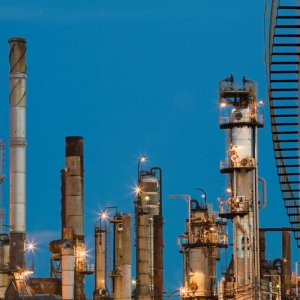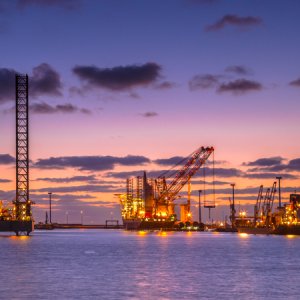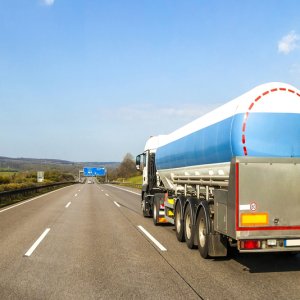A Helping Hand on HQSE Implementation

STORY INLINE POST
Q: Is there any project you are working on in Mexico that you would like to highlight?
A: We are creating a service to develop the Sistema de Administración de Seguridad Industrial, Seguridad Operativa y Protección al Medio Ambiente (System for the Administration of Industrial Security, Operational Security and Environmental Protection) (SASISOPA), which is a safety and environmental protection system. It is similar to the Safety and Environmental Management System (SEMS) in the US, which was founded after the Macondo disaster and is administered by the Bureau of Safety and Environmental Enforcement (BSEE). In the US, companies must have SEMS. ASEA has replicated the idea in Mexico
I think the ASEA system is a little bit more complex. A company first has to register and start designing its management system. The system must then be implemented. A company has two years to comply and this is something with which we support operators because many companies start small. Some companies do not have the full organization required, including a HQSE department, to implement these systems. We come in and help them develop their procedures and then we present these to ASEA. We support the whole process and ASEA either approves it or gives feedback.
Q: What is the most difficult part of this implementation process for the companies involved?
A: It is similar to ISO 9000 and other such management systems, after which it is modeled. Of course, it is also different because certain procedures must be followed that can be quite involved. On a day-to-day basis, this development covers many things and especially small operators will struggle to comply to the letter.
Q: How do you view ASEA’s evolution since its creation? A: It has had the massive task of establishing a new agency basically from scratch. If that is taken into account, it has done reasonably well. But of course, the definition of the regulations has been a long progression. Part of the process is subject to COFEMER and public hearings and it has taken longer than ASEA thought. I think it did a big push at the end of 2016 to get the deepwater and midstream regulations out ahead of the impending Round 1.4 in December, after which point it slowed down. Of course, it has a big task in regulating the entire hydrocarbons sector, unlike the BSEE in the US, which only oversees offshore upstream. Seen from that perspective, ASEA is doing four times more than BSEE, so naturally it is difficult.
Q: How is risk culture in Mexico changing?
A: The first deepwater projects are emerging so it will be interesting to see how risk culture here changes. We have spoken to European operators and they have said that they could not operate here at the moment because there is no compatibility with their internal procedures. A lot must change before they can actually start doing projects here and work to their normal standards. According to these companies, the regulators are not yet fully up to speed and the supply chain and support companies are not yet at the required level.
Q: What is your role in pipeline certification for Los Ramones?
A: We are the verification unit for the subsea pipeline to Tuxpan, which is being built by TransCanada and IEnova. The project is split 60/40 between the companies, with TransCanada taking the greatest share. It is laying the pipe with the Solitaire, a vessel owned by Allseas, which is one of the world’s largest pipe-laying vessels, and around 300km of pipeline has already been laid. That is a very good project and represents a US$2.1 billion investment. We have people on board the lay barge who liaise with the authorities to make sure everything is in order. That is our biggest project for TransCanada.
Q: In what other areas of the oil and gas industry are you active?
A: We are present in practically all onshore activities but we are also trying to generate more activity offshore. We are bidding for the certification of platform construction for a contract won by Dragados for a compression platform, the CA-KU-A1. In this case, PEMEX tendered the platform but will not own it. They are buying the service to compress the natural gas and will pay for each cubic meter of gas compressed. Now that Dragados has won the 11-year contract, it must certify the platform. It will have to hire us or one of our competitors to do the certification during construction and installation. We are also doing a great deal of risk analysis for PEMEX. There is so much infrastructure that requires updated risk analysis every five years. We are contracted by PEMEX to do that.
Q: How is risk culture changing at PEMEX?
A: I think PEMEX has done a lot of good things and implemented many good systems. It still has quality people in high positions and it has developed many safety systems together with DuPont, which is, of course, a world-class company. But the company is lagging in implementation. Sometimes PEMEX has a very good system on paper but implementation in the field is sometimes lacking. Also, the infrastructure is now aging and reaching the end of its design life cycle. PEMEX will have to do more in a systematic fashion to extend the life of such infrastructure or decide what must be replaced to continue operating.
Q: What new techniques are you bringing to Mexico?
A: One global initiative we are launching is the Veracity platform. This is a big database designed to gather and share information. Of course, the rules will have to be established but the idea is to put information into a central database that service providers and clients can access. Right now, a great deal of data is collected but a lot of this data is not really used; it is just collected and then nobody knows what to do with it. We want to put the data in one place and then develop algorithms to use the data and maybe benchmark. That has actually been quite successful. Vessel owners, or example, use our system. They put all the data from the vessels into this database. When they arrive at a port and are asked for several different kinds of information, our system ensures they have all that information available in just one place for all their vessels. That is just the beginning; there is more coming. Of course, there are many companies trying to get into this niche now because it is a fashionable technology but we have the advantage of being seen as an independent third party. Other companies produce their in-house data collection systems to monitor their assets. For example, if they want to sell turbines, they have a certain interest in the results of the monitoring. We do not produce any products. We just sell our services, which gives us more independence.
























